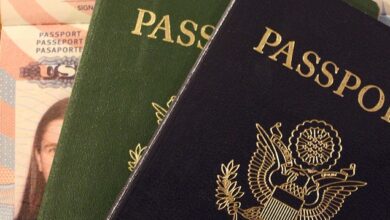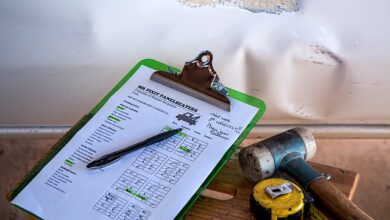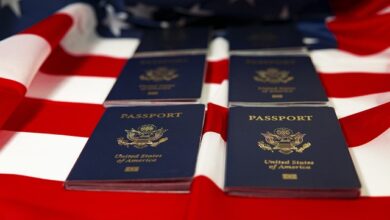Asylum and Refugee Policies in the Netherlands: A Comprehensive Guide

The Netherlands has long been recognized as a country that upholds humanitarian values and provides protection to individuals fleeing persecution, war, or human rights abuses. However, like many European nations, its asylum and refugee policies have evolved over time in response to global migration trends, political pressures, and domestic concerns. This guide explores the key aspects of Dutch asylum and refugee policies, including application procedures, integration efforts, challenges faced, and future directions.
1. Overview of Asylum and Refugee Policies
The Netherlands adheres to international laws and conventions governing asylum seekers and refugees, most notably:
- The 1951 Refugee Convention , which defines who qualifies as a refugee and outlines their rights.
- The European Union’s Common European Asylum System (CEAS) , which harmonizes asylum practices across member states.
In line with these frameworks, the Dutch government aims to provide fair and efficient processing of asylum claims while ensuring national security and social cohesion.
2. Applying for Asylum in the Netherlands
A. Who Can Apply?
Individuals seeking asylum must demonstrate they are unable to return to their home country due to fear of persecution based on race, religion, nationality, membership in a particular social group, or political opinion. Economic migrants do not qualify for asylum under Dutch law.
B. Steps to Apply
- Entry into the Country : Asylum seekers typically enter the Netherlands via legal means or irregularly cross borders. Upon arrival, they must register their intention to apply for asylum at one of the reception centers operated by the Central Agency for the Reception of Asylum Seekers (COA) .
- Fingerprinting and Registration : Under the Dublin Regulation, asylum seekers undergo fingerprinting to determine which EU country is responsible for processing their claim. If another EU state is deemed responsible, the applicant may be returned there.
- Interview Process : The Immigration and Naturalisation Service (IND) conducts interviews to assess the validity of the asylum claim. Applicants must provide detailed accounts of why they cannot return home.
- Decision Making : Based on evidence and legal criteria, the IND either grants asylum status or rejects the application. Decisions usually take several months, though expedited processes exist for certain cases.
3. Types of Protection Offered
Once approved, asylum seekers receive one of the following statuses:
- Refugee Status : Granted to those meeting the 1951 Refugee Convention criteria. Holders enjoy full residency rights and access to welfare services.
- Humanitarian Status : Offered to individuals facing serious harm but not necessarily qualifying as refugees. Benefits are similar to refugee status but with stricter conditions.
- Temporary Protection : Issued during mass influx situations, such as conflicts or natural disasters, allowing short-term stay until conditions improve.
Rejection of an asylum claim does not automatically lead to deportation; applicants can appeal the decision or seek alternative forms of residence permits.
4. Integration Efforts
Successful integration is a cornerstone of Dutch asylum policy. The government invests heavily in programs designed to help refugees adapt to Dutch society and contribute meaningfully to the economy. Key initiatives include:
- Language Training : Mandatory Dutch language courses for all newly arrived refugees to facilitate communication and employment opportunities.
- Employment Support : Access to job training, internships, and vocational education tailored to individual skills and qualifications.
- Housing Assistance : Temporary accommodation provided through COA facilities, followed by relocation to permanent housing once integrated.
- Cultural Orientation : Workshops and activities promoting understanding of Dutch culture, laws, and societal norms.
Despite these efforts, challenges remain, particularly regarding unemployment rates among refugees and social inclusion barriers.
5. Challenges Facing the System
While the Dutch asylum system is robust, it faces several pressing issues:
- Rising Numbers of Applications : Increased arrivals strain resources and infrastructure, leading to longer waiting times and overcrowded reception centers.
- Political Polarization : Debates around immigration often divide public opinion, influencing policy decisions and funding allocations.
- Integration Difficulties : Language barriers, cultural differences, and discrimination hinder full participation of refugees in Dutch society.
- Border Control Pressures : Implementation of the Dublin Regulation creates tensions within the EU, as frontline countries bear disproportionate burdens.
Addressing these challenges requires collaboration between governments, NGOs, and local communities.
6. Future Directions
To tackle emerging issues, the Netherlands continues to refine its asylum and refugee policies. Recent developments include:
- Strengthening border controls and cooperation with neighboring countries to manage inflows effectively.
- Enhancing digital tools for faster processing of applications and better tracking of migrants.
- Promoting regional solutions to address root causes of displacement, such as conflict resolution and economic development.
- Encouraging private sector involvement in refugee employment and entrepreneurship programs.
Additionally, the Dutch government emphasizes the importance of balancing compassion with pragmatism, ensuring that asylum policies align with both humanitarian principles and national interests.



